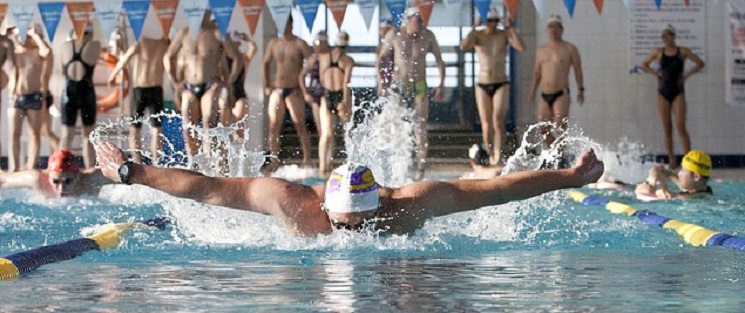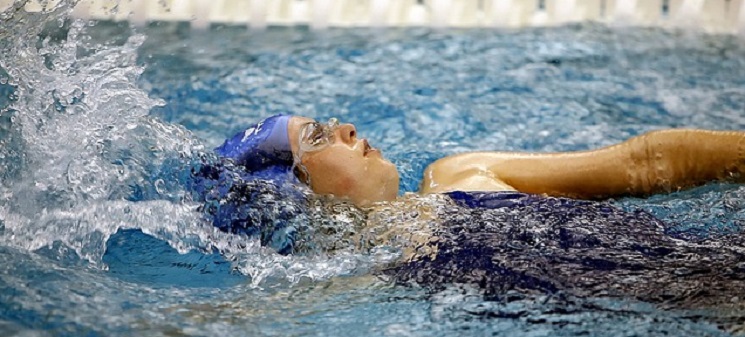Does Swimming Work All Your Muscles?

Is Swimming a True Full Body Workout?
Everyone knows swimming is an amazing full body workout, right? Well, as much as it is touted as a ‘full body’ workout there are many muscles it misses. This page looks at the facts to determine whether this saying is an urban myth.
Below you’ll find out that just how ‘full’ a workout swimming depends on your stroke and intensity of your swim. After that are some tips and tricks to get the most out of your sessions – and an important note about how you eat at the end.
Swimming Full Body Workouts: Only if You Vary Your Strokes
I want to start by saying that way too many people simply use breaststroke at an unbearably slow pace. It needs to be said that this is a far from a full body workout and (while way better than no exercise at all) is simply not the panacea many people think it is.
Your core is largely untouched by several strokes (freestyle and butterfly are the exceptions), and while each of the other major muscle groups is used – only certain muscles in each group are covered by each individual stroke. If we take things literally, swimming works out a dispersed selection of individual parts of your body, rather than all of it. Working out your heart and lungs is a welcome bonus!
When trying to get an all-over workout, limiting yourself to one stroke type is a poor decision. Here you repeatedly work the same muscles, leaving others completely untouched. Secondly, you need to work hard when swimming to get the best results. Like any other cardio exercise, you need to get the heart working hard if we want to start burning calories. Swimming at a snail’s pace just won’t do it. Make sure that you’re pushing yourself and that your heart rate is increasing – taking breaks as needed to recover.
Read on for some of the best strokes to use when swimming, and the main areas each of these is good for.

Freestyle and Backstroke
In both freestyle and backstroke your arms are both pulling and pushing under water. This really works your triceps, biceps and deltoids. On top of this if performed properly both strokes require you to maintain your torso position in the water, to do this you must contract abs and glutes. This will probably be done intuitively but it is done nonetheless, which works both the muscle groups and increases your core strength.
The secondary motion in both freestyle and backstroke is the flutter kick, which mainly works your quads in freestyle and hamstrings in backstroke. Your calf and foot muscles will also get a mini workout too if you are swimming with correct technique.
Butterfly and Breaststroke
Breaststroke and butterfly work a similar set of muscles, but it is much more difficult to perform butterfly and thus you will get a better workout if you can swim a few lengths in butterfly each time at the pool.
Breaststroke requires you to lift your head out of the water to breathe. A common misconception is that this requires neck strength. It is your arm and leg power that propels you out of the water. To do this right a real explosive motion is required.
The sweeping arm movement and frog kick that is required to perform a breaststroke gives your chest, arms and legs a great workout.
Butterfly is for sure the most intense stroke and involves just as much torso and hip as arms and legs giving you close to a full body workout on its own.

Full Body Swimming Workouts – Variety is the Spice of Life
As you can see it is not until you combine all the strokes that you really get close to a full body workout. Varying each swim with different strokes and different intensities will help keep swimming interesting too.
Adding a length or two of butterfly makes your swim more like a HIIT workout and we all know and love the benefits of interval training. The rising popularity of aqua aerobics puts the water to good use to reach even more muscles.
Is Swimming the Ultimate Exercise?
Swimming works all your major muscle groups and at least engages many individual muscles in each group. Having said that swimming alone might not be the be all and end all and certainly has some limitations.
First up if your goal is to build strength and ‘bulk up’ then swimming alone won’t do that. Yes, it works the majority of muscle groups. Though if you want to pack on size and strength you will have to do some weight resistance training as well as the swimming. With sessions at the pool supplying the cardio fitness and a home weights gym for strength training – you’ll be unstoppable.
If your goal is to lose weight, once again swimming alone may well not be enough. Slower swimming is a uniquely low intensity workout, which means that we can swim often without any injuries. The low impact means that you must work doubly hard to see real effects.
Upping the tempo is a great way of burning calories. The calories burnt will quickly slow and stop altogether once you stop swimming. Whereas other cardio exercise will get your body into a state where calories are still burning long after the exercise stops and heart rate returns to normal.

Swimming: Full Body – or a Cop-Out?
Okay, so what can we draw from all of this? First off, swimming is great form of exercise. If you are sedentary, this is a perfect way to get started on the road to a fitter, healthier lifestyle. It also makes a refreshing change from gym sessions or classes.
If you have been swimming a while and are not seeing the results I would suggest upping the tempo, varying the strokes you use and finally coupling swimming with other cardio and strength workouts to get the most out of it.
As ever your diet is important to. If you want to get the best results and be able to swim to your full potential then make sure you’re well rested, hydrated and are consuming a balanced healthy diet.
More Popular Fitness Guides:
- How to Train Like a Roman Gladiator?
- Getting Rid of ‘Bingo Wings’
- Best Abs Toning Belts
- Insect Protein Guide
- Most Extreme Marathons
- Shoe Grips for Ice and Snow


